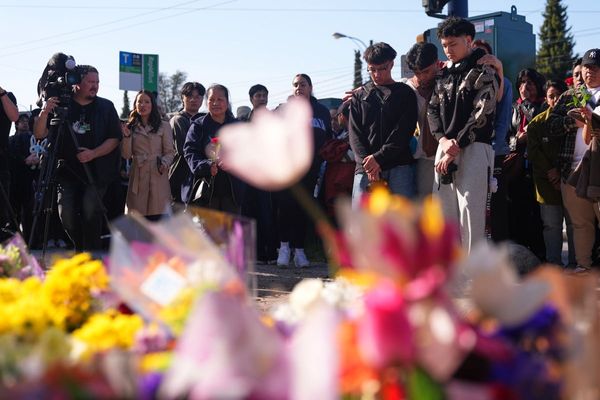The first stage of the war in Ukraine didn’t go according to Vladimir Putin’s plan, but it is the next four weeks that could determine how the map of Europe is changed as a result of his invasion. The incremental sanctions tightening we’ve seen in recent days will make little difference to that battle. It will also require a major increase in the supply of weapons and changes to the kinds of weapons supplied by Ukraine’s allies in Britain, the U.S. and other countries.
Military analysts and officials in the U.S. and other NATO countries are warning that the next week to 10 days will see a major intensification of Russian military operations, with resupplied Russian forces deployed in the Donbas region in an attempt to defeat Ukrainian holdouts in Mariupol, freeing Russian forces there for a pincer movement from both north and south.
However poorly Russia’s forces have performed on the battlefield so far, it now has a more realistic set of objectives. Instead of an invasion from three fronts, Russia will now have a single axis to focus on, and one where its supply lines are less vulnerable to Ukrainian attack. Russia has also taken the measure of the Ukrainian military, which it badly underestimated.
Before the war, Ukraine’s Joint Forces Operations (JFO) in the east, numbering over 40,000, featured the best equipped and trained of Ukraine’s forces. Those troops remain determined, but the past five weeks of hard fighting have taken a toll. They are also harder to supply and don’t have the same benefit of air defenses as those around Kyiv.
Putin may have in mind May 9 — already known as Victory Day in Russia, when the country celebrates the defeat of Nazi Germany — as a deadline of sorts for reclaiming the east of Ukraine, which Putin considers a step toward restoring Russia’s lost empire and sphere of control. If Russian forces succeed in taking ground, they will then seek to seal off that part of Ukraine.
But Russia lacks the forces to go beyond Ukraine’s JFO area, notes Jack Watling, an expert in land warfare and senior research fellow at the Royal United Services Institute. Putin has committed most of Russia’s available combat forces to the original operation and has limited reserves. The units not already in Ukraine are either support troops, fresh conscripts or units that have responsibilities elsewhere, which the Kremlin will be loath to shift.
If Russian forces lose momentum and are blunted by anti-tank weapons and artillery, Watling reckons they would be exhausted in about four weeks. Then Putin will have a bigger decision to make: whether to move to a war footing, no longer referring to the conflict as a “special military operation” but expanding it and mobilizing the country.
The withdrawal of forces around Kyiv and dropping of Russian objections to Ukraine joining the EU eventually suggest some recalibrating from Russia is already happening. “Zelenskiy is now in a very much stronger position than anyone in the West thought he would be,” notes Sir Malcolm Rifkind, a former U.K. defense and foreign secretary, who sees some cause for optimism. “NATO has never been as strong as it is now. Germany has totally transformed its defense policy from the one it pursued for the last 40 years. Russia is about to lose one of its two main energy destinations and its most important source of revenue, even if it will take some time. The Nordstream project has collapsed. The Russians have lost control over their foreign currency reserves.”
And yet, winning the opening round isn’t the same as prevailing to the end. A dismembered Ukraine would change Europe’s security landscape significantly. And while some may urge Ukraine to reach a settlement as soon as possible, any ceasefire or deal that leaves Ukraine vulnerable to renewed attack will make a real rebuilding effort — which requires attracting investment — impossible.
The new phase of fighting that is coming demands a new kind of western support, argues Chatham House’s Keir Giles, author of two books on Russian foreign policy in recent years. “The weapons Ukraine needs in order to keep fighting are not totally defensive weapons, in order to help Ukraine not lose, but also tools to help Ukraine carry the fight to the enemy and must include long-range firepower to strike deep into Russian-controlled areas,” he says. The U.S., he says, has been in crisis management mode rather than focused on Ukraine’s needs at a critical stage of the fight.
There is plenty that Britain and other NATO countries can do. Ukraine’s shopping list includes anti-tank guided weapons (ATGWs), portable air-defense systems, ammunition, drones, radar, surface-to-air missile systems and so-called loitering munitions, which wait passively around the target for the right moment. Soviet-era T-72 tanks being sent by the Czech republic are helpful because the Czech Republic can also produce spare parts and Ukrainians know how to use and maintain them. It’s less obvious that a mix of other armed vehicles, on different platforms, would be useful and getting supply to the east will be harder.
Ukraine will need supplies for reservists and recruits who are being sent to the front as beleaguered forces there are rotated out. NATO countries need to facilitate the transition of some of Ukraine’s defenses, including air defenses, to platforms that can be better supported (at a time when those countries are worried about their own supply). There is also a pressing need for humanitarian support and economic aid to keep the economy from colapse.
Sanctioning oligarchs and seizing yachts was performative compared to what’s needed now to impact the future security landscape of Europe.
Putin’s invasion was no random black swan moment, as devastating but entirely unpredictable events are called, note geo-strategists Florence Gaub and Andrew Monaghan. Rather, they say, it’s a “grey rhino” — impactful but highly probable and entirely predicted. Formulating a response requires a thorough consideration of strategic objectives and potential pitfalls, not simply crisis management.
This next phase of war will pose a test not just for Ukraine’s forces, but of the democratic world’s unity, sense of purpose and ability to think clearly about the future.
____
ABOUT THE WRITER
Therese Raphael is a columnist for Bloomberg Opinion. She was editorial page editor of the Wall Street Journal Europe.
This column does not necessarily reflect the opinion of the editorial board or Bloomberg LP and its owners.







